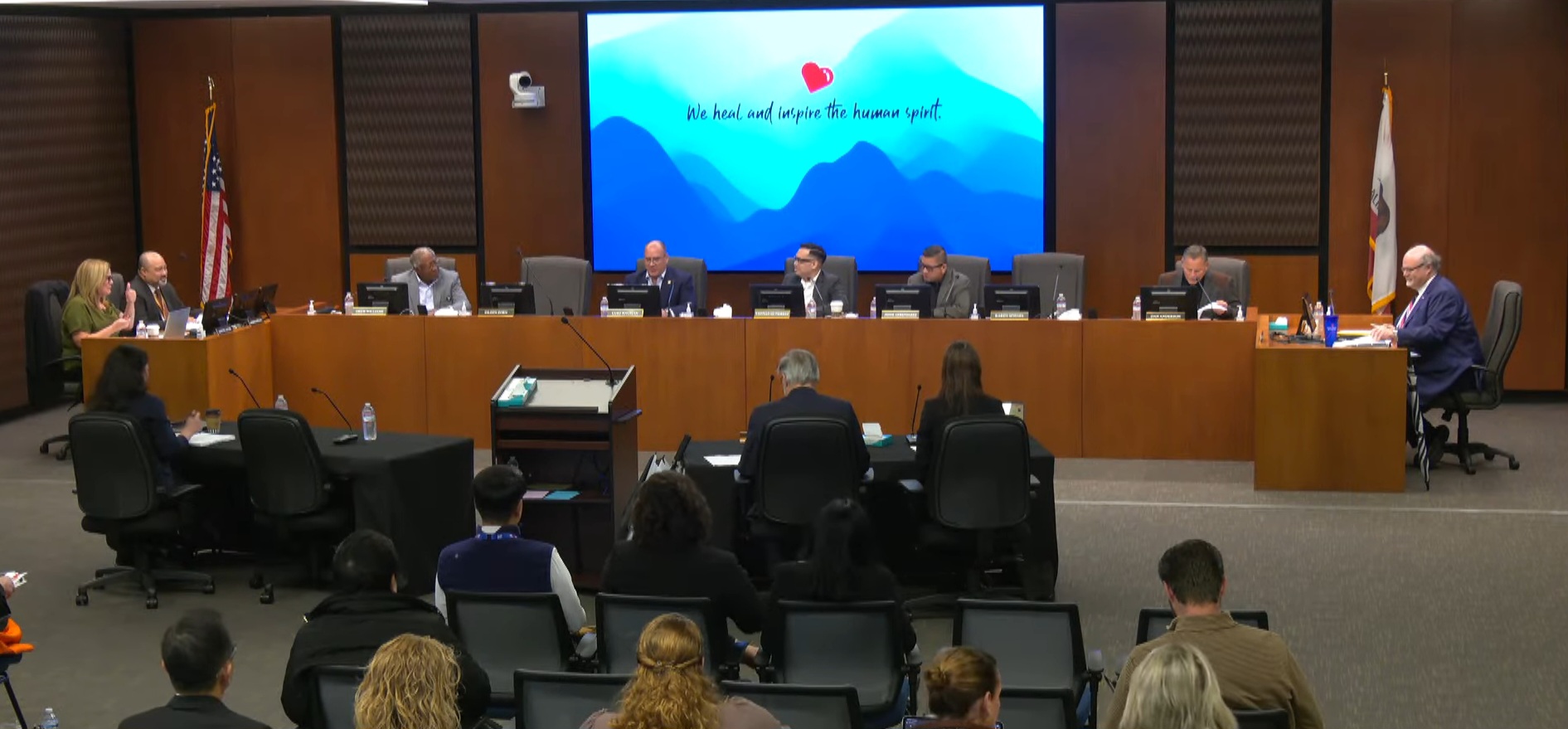The Inland Empire Health Plan (IEHP) Governing Board meets on Oct. 14 at the Dr. Bradley P. Gilbert Center for Learning and Innovation
On Oct. 14, the Inland Empire Health Plan (IEHP) Governing Board convened at the Dr. Bradley Gilbert Center for Learning and Innovation to review financial performance, quality measures and new efforts to modernize member services.
The meeting, chaired by Riverside County Supervisor Manuel Perez Gutierrez, opened with an early closed session addressing ongoing federal litigation before moving through a packed agenda spanning operations, technology and health equity.
Chief Executive Officer Jarrod McNaughton celebrated IEHP’s second annual Mission Week, designed to “re-ground” staff in theorganization’s commitment to “heal and inspire the human spirit.”
McNaughton also reported that IEHP’s enrollment remained stronger than most public health plans statewide despite post-pandemic Medi-Cal redeterminations.
He credited collaboration with San Bernardino and Riverside counties for keeping “eligible members from falling through the cracks.”
He then celebrated a statewide policy win: a revision to the Department of Health Care Services’ Auto-Assignment IncentiveProgram, which will now prioritize higher-performing plans.
“That means more members for IEHP,” said Chief Quality Officer Genia Fick, noting that the change rewards plans based on quality scores rather than random assignment.
McNaughton further briefed the board on his Washington, D.C. meetings during the ongoing federal shutdown.
He and IEHP Government Affairs Director Victoria Ostermann visited 14 congressional offices to discuss fraud prevention, provider taxes and maintaining the Enhanced Premium Tax Credit.
Vice President of Provider Experience Mike Grant presented an update on IEHP’s automation strategy, which includes AI-poweredchatbots, voice assistants and real-time call transcription.
Grant said these tools have already reduced average call-handling time by up to 30%. “Our chatbot launched last year andalready serves 9,000 users a month,” Grant said.
He added that live chat options and an AI voice assistant, nicknamed Sage, allow members to manage ID cards, address changes and eligibility questions without waiting on hold.
IEHP also introduced its “Voice of the Member” program, a system that measures Net Promoter Score (NPS) across all service lines.
“We’re at 51%, which is considered excellent,” Grant said, comparing IEHP’s ranking favorably to national leaders like Kaiser Permanente and Amazon.
Supervisor Curt Hagman praised the system’s potential to streamline member experiences but cautioned against eliminating human access.
Grant assured the board that “members can always press 0 to reach a live agent.” Board members discussed liquidity challenges after a 2024 downturn.
“Forty days of cash on hand goes by quickly when the state or federal government delays payments,” Hagman observed.
Chief Quality Officer Genia Fick unveiled county-level data that could trigger state sanctions under the new Medi-Cal Managed Care Accountability Set (MCAS).
While IEHP met 16 of 18 state performance measures overall, Riverside County fell short on five, compared to three in San Bernardino County, potentially subjecting the plan to the Department of Health Care Services (DHCS) penalties.
“We weren’t expecting to see such a difference between the two counties,” Fick said.
Fick attributed the disparity to Riverside’s higher reliance on safety-net clinics, which serve 46% of county members compared to 28% in San Bernardino.
A “hot-spot” map displayed concentrations of unmet care gaps in Riverside communities, prompting IEHP to expand partnershipswith federally qualified health centers (FQHCs) and the Inland Empire Foundation for Medical Care.
“We’re embedding quality teams directly into underperforming clinics,” Fick said.
Fick also addressed a decline in IEHP’s National Committee for Quality Assurance (NCQA) rating, which dropped from four to three-and-a-half stars after national benchmarks rose.
“Our clinical scores improved, but member-experience measures fell sharply,” Fick explained, citing decreases in getting care quickly and getting needed prescription drugs.
Vice President of Pharmacy and Medicare Stars Sharon Kaur Jhawar outlined strategies to improve IEHP’s Dual-Eligible Special Needs Plan (D-SNP) rating.
The plan, currently at 3 stars, aims to reach 3.5 by 2026 through provider incentives, member outreach, and a new concierge pilot offering “white-glove service” for seniors.
“We’ve put in place a personal holiday reward so every employee has a stake in improving Medicare quality,” Jhawar said.
The program includes academic detailing for providers with high care-gap rates and a real-time dashboard tracking 45 Medicare Star measures.
“Medicare Stars is a team sport,” Jhawar told the board. “Hundreds of people across the organization are rowing in the same direction.”





